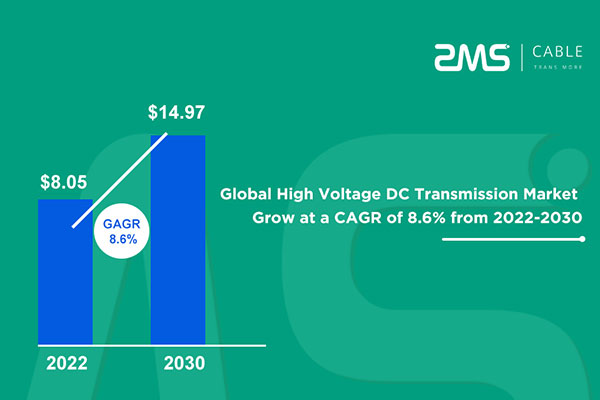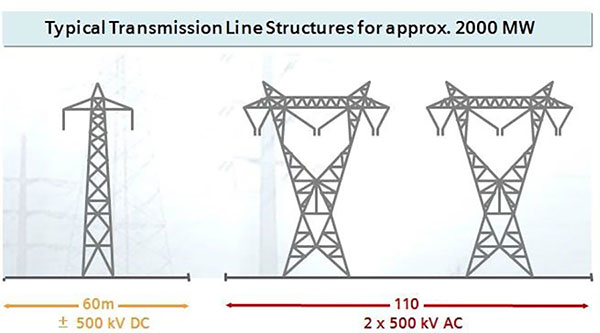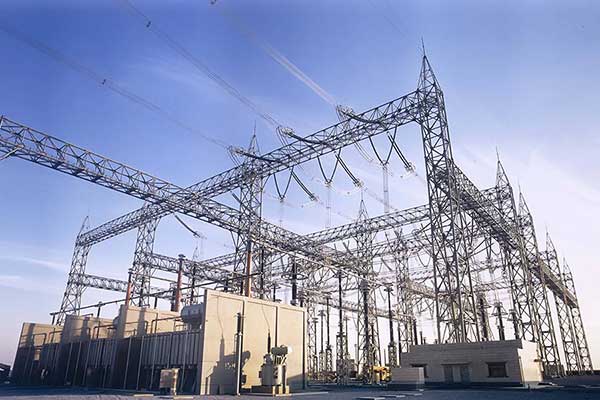Global High Voltage DC Market to Grow Rapidly
According to a comprehensive research report by Market Research Future (MRFR), the global high-voltage DC transmission market is set to grow at a CAGR of 8.6% from 2022-2030.
The rapid expansion of offshore wind power and the growing electricity demand are the major factors contributing to the growth of this market. The market for high-voltage DC transmission systems is expected to grow as more and more offshore wind power projects are being installed. Offshore wind energy can generate large amounts of electricity, which can then be distributed to areas with high electricity demand.

In addition, as the electricity demand grows, the demand for cable-based transmission also grows. At the same time, the growth of the HVDC transmission market is stimulated by safety considerations, such as the lack of insulation on HVDC overhead transmission lines, which poses a significant risk to public safety.
At the same time, factors such as the rising market share of distributed generation and short circuits in AC power systems will also restrain the growth of this market. The rising share of distributed and off-grid generation is meeting the demand for electricity in off-island and remote areas during the forecast period. Also, the cost of distributed and off-grid power generation is lower compared to high-voltage DC.
In terms of regional markets, Asia Pacific is expected to dominate the global HVDC transmission market during the forecast period. Due to the expansion of power infrastructure in the region, China in particular is investing heavily in renewable energy and power transmission using cutting-edge UHV DC technology. These elements are expected to drive the Asia-Pacific high-voltage DC transmission market in the coming years.
In addition, the U.S. holds the largest market share in North America during the forecast period due to the increase in offshore wind installations and renewable energy generation. The demand for cost-effective long-distance transmission solutions is also expanding in the region and North America is expected to grow at a robust rate during the forecast period.

Advantages of High Voltage DC Transmission Systems
High voltage DC transmission systems avoid some drawbacks and limitations of HVAC systems and have the following advantages.
1. It can meet the need for long transmission distances
Technically there is no limit to the length of submarine cable transmission. HVDC transmission distance of up to 3000km.
2. Flexible control and convenient scheduling
Does not require the synchronous operation of the connected system
Not affected by impedance, phase, frequency, or voltage fluctuations
Still maintains the independence of frequency and generator control.
Modulation of DC power according to frequency, power oscillation, or line load level can improve the stability of the AC system, thus increasing the transmission capacity of the lines in the system.
3. High capacity, low losses
No increase in short-circuits capacity on AC switchgear. Transmission capacity can reach 3GW~7GW.
4. Save lines, low cost for long-distance power transportation
The HVDC corridor saves more land than the HVAC transmission corridor.
In addition, HVDC transmission costs are lower than HVAC transmission when the transmission distance exceeds the equivalent distance. This Breakeven Distance is based on the influence of different parameters (e.g. transmission capacity or voltage level). Typically, the equivalent distance for Overhead Line is 600~800km and for HVDC Submarine Power Cable is 60~80km.

HVDC Transmission System Application Examples are Mainly The Following Eight Categories
1. High-power long-distance overhead line transmission.
2. High-power transmission through submarine cables.
3. Fast and precise control of power on HVDC transmission lines or back-to-back DC transmission systems, or modulation of transmission power to produce positive damping of electromechanical oscillations, thereby improving the stability of the power system.
4. Because the HVDC system is not limited to the frequency and phase of the two AC systems connected, it can be used back-to-back asynchronous connection of two different frequency AC systems.
5. When electricity needs to be transmitted over long distances from remote power stations across different parts of a country or borders, it is strategically and politically necessary to use a multi-terminal DC system to connect potential users in the transit area. 6.
6. HVDC systems can also be used to connect renewable energy-based power sources, such as wind power, especially when the power source is far from the customer.
7. HVDC technology based on voltage source converters (VSC) is gaining importance and this new technology has become feasible due to developments in insulated gate bipolar transistor (IGBT) technology. In such systems, pulse width modulation (PWM) can be used in the VSC, unlike conventional HVDC based on thyristors. This technology is very suitable for wind power connections to the power system.
8. Since the DC system does not deliver reactive power and the HVDC connection of the two AC systems does not increase the short-circuit capacity, this technology is also useful when generators are connected to the grid.
In the concept of energy saving and environmental protection of economic development, “high energy efficiency, low loss” of high-voltage and ultra-high voltage power cable transmission is the inevitable direction of development of the power industry.
Many researchers have researched improving cable performance materials, solving the problem of space charge measurement, avoiding possible cable damage during construction, and the hazards of ice and freezing on power cable lines.
The foundation has been laid for the development of cross-linked polyethylene cables and high-voltage and ultra-high-voltage DC cable technologies.
With the continuous development of power cable technology and gas-insulated pipeline technology, the future power grid is bound to develop into a mixed transmission mode of overhead transmission lines, gas-insulated pipeline lines, and power cable lines.
—ZMS Cable Group
